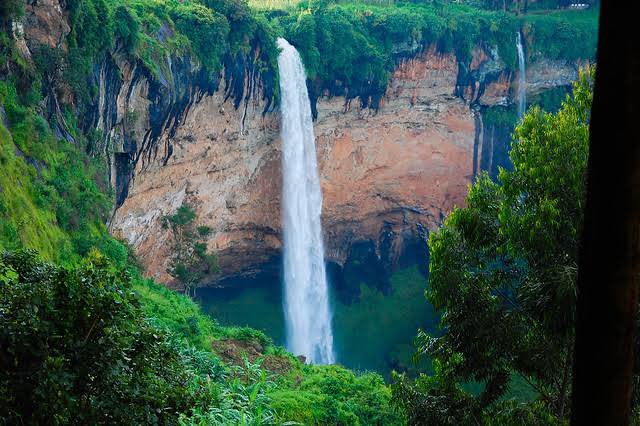
Journey to the Heart of Tradition: Annual Cattle Movement Ceremony in Nakapiripirit, Uganda
Experience the Annual Cattle Movement Ceremony in Nakapiripirit, Uganda, where tradition meets wild, rugged landscapes. This practical yet mesmerizing event invites adventurers to join a centuries-old livestock migration across challenging terrain, blending cultural insight with an exhilarating outdoor trek.
Start Early to Beat the Heat
Begin your hike at dawn to avoid the midday sun, which can quickly drain your energy on the exposed terrain.
Wear Sturdy Footwear
Use hiking boots with strong grip to handle the mix of dusty trails, rocky patches, and thorny vegetation.
Hydrate Constantly
Carry at least 3 liters of water and sip frequently to stay ahead of dehydration in the dry climate.
Hire a Local Guide
Gain deeper insight into the cultural context and navigate the challenging landscape safely with a knowledgeable guide.
Journey to the Heart of Tradition: Annual Cattle Movement Ceremony in Nakapiripirit, Uganda
Each year, as the dry season bites into Uganda’s northeast plains, the Jie people of Nakapiripirit gather for a ceremony that pulses with both cultural pride and rugged practicality—the Annual Cattle Movement Ceremony. This event isn’t just a procession; it’s a rite of passage and a crucial survival strategy, migrating livestock to greener pastures as the land demands. The journey stretches across uneven terrain, from open savannahs to pockets of acacia-dotted hills that stand like silent witnesses to centuries of tradition.
The hike involved isn’t one for the faint-hearted. Covering approximately 20 kilometers over rough, sometimes rocky ground, it demands steady footing and a good level of stamina. Expect elevation changes as the route climbs small hills, but nothing extreme—an ascent gain around 300 meters frames sweeping views of the shifting landscape, where the dry season’s ochres give way to patches of stubborn green.
As you move through the terrain, the heat plays a constant adversary—its dry breath pushes on you relentlessly, urging you to stay hydrated and dress for sun protection. Footwear should be robust; the earth shifts from packed dust to loose gravel, with thorn bushes lurking near some sections. The air carries the scent of dry grass and distant smoke from village fires, while the occasional call of birds breaks the silence, as if nature itself acknowledges this movement as an ancient contract between people and land.
Arrival at the ceremonial grounds bursts with energy. Cattle, adorned with beads and painted horns, are paraded alongside warriors and elders clad in their distinctive dress. The atmosphere vibrates with drumbeats that echo the heartbeat of the community, chanting that binds the past with the present. This ceremony is a practical necessity wrapped in celebration, binding the community’s future with its ancestral roots.
Planning is key. Arrive early to secure guides familiar with both the terrain and local customs—their knowledge is invaluable in navigating not only the landscape but the cultural nuances. Carry ample water—minimum 3 liters for the day—and pack lightweight snacks for energy. Start early in the cool morning hours; afternoon heat can be punishing.
Respect for the environment and the community shapes the experience. Stick to designated paths to preserve fragile flora, honor requests from locals about photography and participation, and prepare for basic facilities—there’s little infrastructure, so be ready to embrace simplicity.
This adventure offers more than a hike: it’s an immersive bridge into a fiercely alive tradition, where every step resonates with purpose, and the land itself seems to pulse alongside the cattle and their keepers. It’s for those who seek a challenge balanced by meaningful connection, a journey where culture and wilderness push forward in tandem.
Nearby Trips
All Adventures
Boat Charters
Water Activities
Adventures near Nakapiripirit, Uganda
Discover the unique and memorable adventures that make Nakapiripirit, Uganda special.
Frequently Asked Questions
What is the significance of the cattle movement for the Jie people?
The cattle movement is both a cultural ceremony and a practical response to seasonal changes, ensuring livestock access to fresh grazing while reinforcing community bonds.
Can visitors participate or just watch the ceremony?
Visitors are welcome to observe respectfully and sometimes join parts of the journey when accompanied by local guides, but direct participation depends on local customs and permissions.
What wildlife might one see along the route?
Look out for species like the Nubian giraffe, various antelope, and a vibrant array of birds including the majestic African fish eagle and colorful starlings.
Are there accommodations nearby Nakapiripirit?
The closest accommodations are in Mbale, about 150 kilometers away, ranging from guesthouses to lodges where you can rest before and after the event.
How physically demanding is the hike?
It's moderate—mostly steady walking over mixed terrain with some hills; suitable for those in reasonable shape but not requiring technical climbing skills.
Are there any environmental concerns related to the ceremony?
Overgrazing and soil erosion can be issues, but the Jie community’s traditional knowledge helps sustain the land through controlled movement and rest periods.
Recommended Gear
Hiking boots
Protects your feet on rough, variable trails and provides necessary ankle support.
Wide-brimmed hat
Shields your face and neck from strong equatorial sun during daytime trekking.
Reusable water bottle with filtration
Ensures hydration and safety by allowing refill from local sources after filtration.
Lightweight rain jacket
Provides protection during unexpected rain showers, especially in the cooler months.
Local Insights
Hidden Gems
- "Look for smaller, lesser-known vantage points atop the dispersed hills for panoramic views away from the main ceremony."
- "Nearby seasonal waterholes attract diverse wildlife and offer quiet spots to observe nature’s rhythm."
Wildlife
- "Nubian giraffes wandering alongside herds"
- "Vervet monkeys active in acacia trees"
- "Red-billed hornbills with their distinctive calls across dry plains"
History
"The ceremony traces back generations, rooted in the Jie people’s pastoralist lifestyle, linking livestock health with community identity and land stewardship."
